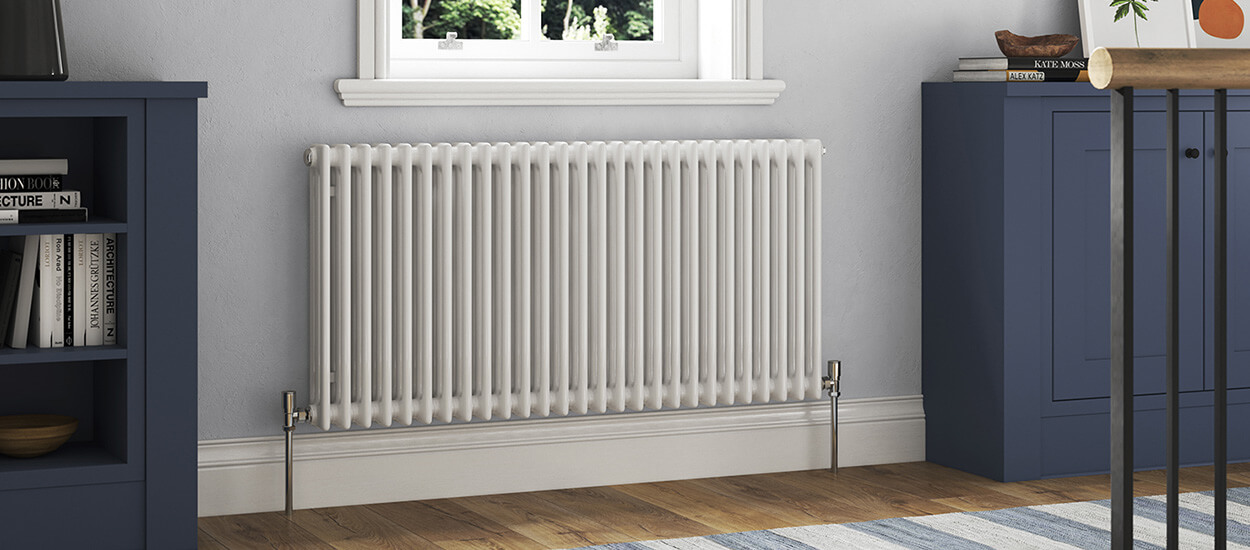When you’re buying a new radiator, making sure that you’re choosing the right product for your home is essential. There are a few things to consider when deciding which is the perfect radiator, such as considering the wall space that you have available, the style of radiator that fits your aesthetic, and how well the radiator will heat the room – after all, you can pick the most stylish designer radiators, but you must be sure that it will heat your room well, most importantly.
Before you start browsing styles, colours, or designs, it is helpful to know the BTU output you need to heat your space effectively. But what is BTU and how many BTU do you need for a room?
What is BTU and Why?
BTU stands for British Thermal Unit, an energy unit that is used to measure the output a radiator needs to heat a room. It is important to measure the BTU you need before buying radiators, as this will help you to narrow down your search and help you to determine if the radiator you are choosing will heat your space to a high standard. Sometimes, people think that the bigger the radiator, the higher the heat output will be, and it is easy to see why people make this assumption – but unfortunately, it’s not that simple! Calculating what is the BTU output required is key.
How to calculate BTU
When it comes to calculating BTU, there are a few things you need to measure first before doing so.
- The size and total volume of your room – generally, the larger your room, the more BTU you will need to heat it sufficiently. Measuring the length x width x height of your room in feet will give you the first measurement you need when it comes to calculating BTU.
- Determine room type – The type of room you are heating plays a large part in your BTU calculation. Each room type has a multiplication factor. For example, the bathroom should always be the warmest room and so has a higher factor, and the hallway cooler, therefore it has a lower factor.
- Heat loss and heat retention – Many features will contribute to heat loss in a room, such as a single glazed window, or heat retention that can be caused by warm neighbouring rooms. The multiplication factor is larger the more heat that you lose from a feature.
The final calculation
So, when you have measured all of the above, you can see what the BTU for the room is and decide which radiator will suit it best. Your calculation to determine what is the BTU should look like this:
The volume of the room x room type x room heat/loss features
The total of the measurements and multiplication factors will give you your approximate BTU.
How many BTU do I need?
Approximately, most standard size rooms range between 2000 and 6000 BTUs, so you can use this as a general idea when wanting to learn how many BTU you need. However, to calculate the output needed for your room more accurately, you should consider the calculations above and factor in the size of the room, as well as heat loss and retention.
Which radiators provide the best output?
The amount of heat that radiators give out can depend on a few things, such as material, size, water content, and surface area. If you’re looking for a radiator with a high BTU output, it is always best to check the technical specification before you decide. Generally, cast iron radiators tend to be unrivalled when it comes to their ability to heat a room, and with the choice of a variety of different heights and lengths, they can make for a great feature in any home.
Why is the correct number of BTUs important?
Calculating what is the BTU for a room may seem like a lot of effort to go to when choosing a radiator but being aware of the output that you need for a room means you can avoid issues in the future. If you choose a radiator that doesn’t have a sufficient BTU output, it can mean that your radiator is not heating effectively, and it can lead to cold spots accumulating around your home. It is recommended that you choose a radiator with a slightly higher output than you might need because you can always turn your radiator down. If you choose a radiator with a low BTU output for your home, you’ll need to upgrade to something that has a higher output and produces more heat.
How do I choose the correct size radiator?
This all depends on how much wall space you have in the room you’re heating. If space is limited, you may need to look at vertical column radiators that have a high BTU output to heat the whole room. If you have wall space for more than one radiator, you can split your BTU measurement between the two. For example, if you need 2000 BTUs to heat your room effectively, you could choose two horizontal column radiators at 1000 BTUs each.
For more information on what is BTU and to work this out, use our handy BTU heat loss calculator. Any queries on how many BTU do I need, please get in touch.

